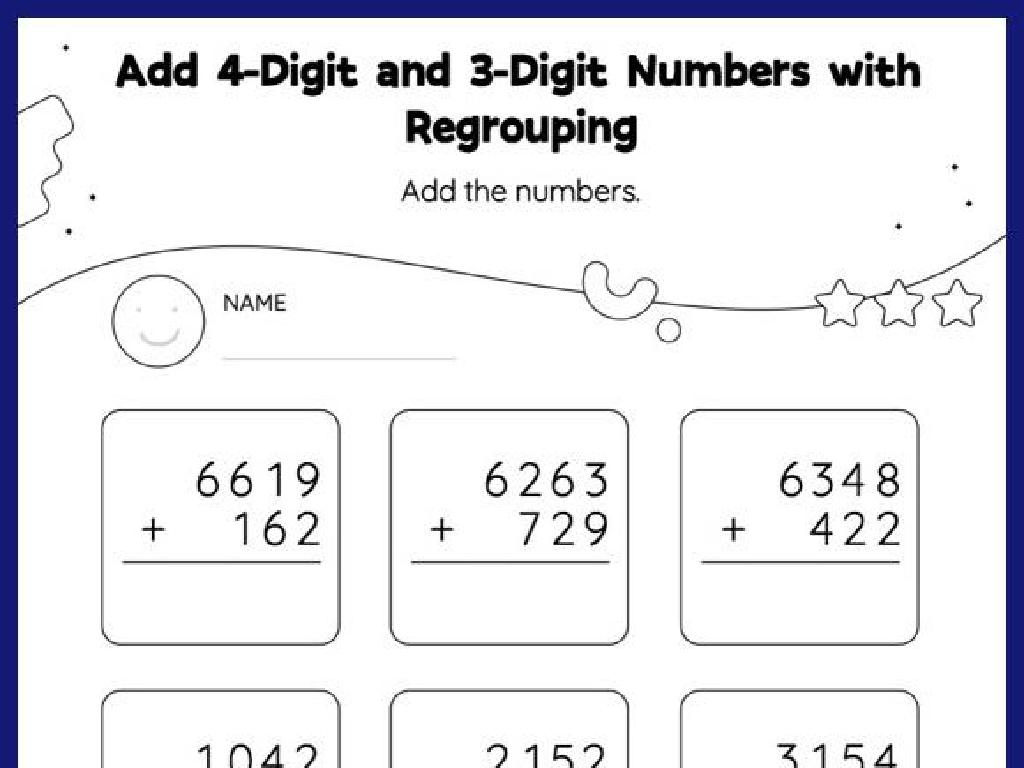Origins Of Judaism
Subject: Social studies
Grade: Seventh grade
Topic: World Religions
Please LOG IN to download the presentation. Access is available to registered users only.
View More Content
Exploring World Religions: Origins of Judaism
– Introduction to World Religions
– Today’s Focus: Judaism
– Judaism: A faith over 3,500 years old, believing in one God
– Significance of religious studies
– Studying religions promotes respect and understanding of diverse beliefs
– Monotheism in Judaism
– Monotheism: Belief in a single, all-powerful God
|
This slide introduces the concept of World Religions with a focus on Judaism, one of the oldest monotheistic religions. Emphasize the importance of understanding different religious beliefs to foster a culture of respect and empathy. Highlight Judaism’s foundational belief in one God, which has influenced many other religions and cultures. Encourage students to consider how studying various religions can provide insight into history, culture, and personal beliefs. Discuss the concept of monotheism and its significance in the development of Judaism and its impact on world history.
Exploring Judaism: Core Beliefs
– Judaism: A brief definition
Judaism is the Jewish religion and way of life.
– Core beliefs of Judaism
Beliefs include following the Torah, the importance of good deeds, and the concept of a Messiah.
– Monotheism in Jewish faith
Judaism is one of the first religions to worship only one God, emphasizing a unique covenant.
– Significance of Jewish traditions
|
This slide introduces students to Judaism, one of the world’s oldest monotheistic religions, which has had a profound influence on later Western religions like Christianity and Islam. Start by defining Judaism, not just as a religion but also as a cultural and historical tradition. Discuss the core beliefs, such as the significance of the Torah, ethical living, and the messianic hope. Highlight monotheism as a key aspect of Judaism, setting it apart from many other ancient religions. While discussing, ensure to respect the diversity of religious beliefs in the classroom and encourage open-mindedness and curiosity.
Historical Context of Judaism
– Judaism’s roots in ancient Israel
– Originated over 3,500 years ago in the Middle East.
– Abraham and Moses as patriarchs
– Abraham, the founder; Moses, the lawgiver.
– The Torah’s historical significance
– The Torah is the central reference of Jewish history.
– Understanding Jewish traditions
|
This slide aims to provide students with a foundational understanding of the historical context of Judaism, one of the oldest monotheistic religions, which began in ancient Israel. Key figures such as Abraham, considered the father of the Jewish nation, and Moses, who led the Israelites out of Egypt and received the Torah, are highlighted. The Torah, the first five books of the Hebrew Bible, is not only a religious text but also a historical document that guides the Jewish faith and culture. Students should grasp the significance of these elements and how they have shaped Jewish history and traditions. Encourage students to explore how these historical contexts have influenced modern Judaism and its followers worldwide.
The Covenant in Judaism
– What is a covenant?
– A sacred agreement or promise
– God’s covenant with Abraham
– God promised land and blessings to Abraham’s descendants
– Covenant’s role in Judaism
– It’s a foundational belief, shaping Jewish identity and faith
– Reflecting on its significance
|
The concept of a covenant is central to understanding Judaism. It’s a sacred agreement, akin to a contract, where God made promises to the Jewish people. The most significant covenant was with Abraham, where God promised him land and blessings for his descendants, establishing the Jewish people. This covenant is not just a historical event; it’s a cornerstone of Jewish faith and identity, influencing religious practices and the Jewish sense of belonging to a special promise from God. When discussing this with students, emphasize the lasting impact of this covenant and how it has shaped the collective memory and practices of Jewish people throughout history.
Sacred Texts and Teachings of Judaism
– Introduction to Jewish texts
– Torah and Talmud are central to Judaism.
– Guiding life with sacred texts
– These texts influence daily life and ethics.
– Rabbis’ role in interpretation
– Rabbis teach and interpret Jewish laws.
– Significance of text interpretation
– Interpretations affect religious practices.
|
This slide introduces students to the foundational texts of Judaism, such as the Torah and the Talmud, and their importance in guiding the lives of Jewish people. The Torah, which is the written law, consists of the first five books of the Hebrew Bible. The Talmud is a collection of writings that covers the full gamut of Jewish law and tradition. These texts are not just historical documents but are living guides that inform every aspect of a Jewish person’s life, from moral decisions to daily rituals. Rabbis play a crucial role as interpreters of these texts, helping to apply ancient teachings to contemporary issues. Understanding the dynamic relationship between the texts, their interpretation, and the role of religious leaders will give students insight into how religious beliefs and practices are lived out in the Jewish community.
Judaism Through Time
– Evolution from ancient to modern
– Began over 3500 years ago, adapting through history
– Diaspora’s role in spreading Judaism
– Post-Temple destruction, Jews dispersed globally, forming varied communities
– Modern branches: Orthodox, Conservative, Reform
– Each branch interprets Jewish law and tradition differently
|
This slide aims to provide a brief overview of the historical progression of Judaism and its global spread. Highlight the origins of Judaism, its evolution through significant historical events, and the resulting Diaspora, which led to the establishment of Jewish communities around the world. Discuss the differences between the modern branches of Judaism Orthodox, Conservative, and Reform in terms of their adherence to traditional Jewish law and customs. Encourage students to reflect on how religions adapt over time and the impact of historical events on religious practices. This will set the stage for a deeper exploration of each branch and the diversity within the Jewish faith.
Judaism Today: Traditions and Influence
– Explore Jewish holidays
– Learn about Passover, Hanukkah, and other key celebrations
– Judaism’s societal impact
– How Jewish thought shaped ethics, law, and civilization
– Cultural traditions in Judaism
– Rituals like Bar/Bat Mitzvah, dietary laws (Kashrut)
– Jewish community diversity
– Variations in practice among Ashkenazi, Sephardi, and other groups
|
This slide aims to give students a glimpse into the rich tapestry of Jewish life and its contributions to the world. Discuss the major Jewish holidays and the traditions associated with them, emphasizing their historical and spiritual significance. Highlight how Jewish teachings have influenced various aspects of society and culture, including moral philosophy and legal systems. Explore the cultural traditions that are unique to Judaism, such as coming-of-age ceremonies and kosher dietary laws. Finally, address the diversity within Jewish communities globally, explaining how historical migrations and local cultures have led to a variety of Jewish practices and beliefs. Encourage students to appreciate the complexity and the global nature of Judaism.
Class Activity: Exploring Judaism
– Discuss similarities & differences
– Create a Judaism mind map
– Include key concepts like monotheism, the Torah, and Jewish holidays.
– Reflect on religious tolerance
– Why is it important to respect all beliefs?
– Share your insights with the class
|
This activity is designed to engage students in a group discussion to compare and contrast Judaism with other world religions, fostering an understanding of religious diversity. Students will then create a mind map to visually organize the key concepts of Judaism, such as monotheism, the Torah, holidays, and traditions. The reflection exercise encourages students to think about and articulate the importance of religious tolerance in a diverse society. Teachers should facilitate the discussion, provide guidance on creating mind maps, and encourage every student to participate. Possible activities: 1) Assign each group a different religion to compare with Judaism. 2) Have students use online tools for mind mapping. 3) Share reflections in a class discussion. 4) Create a ‘tolerance tree’ where each leaf represents a student’s thought on why tolerance is important.






